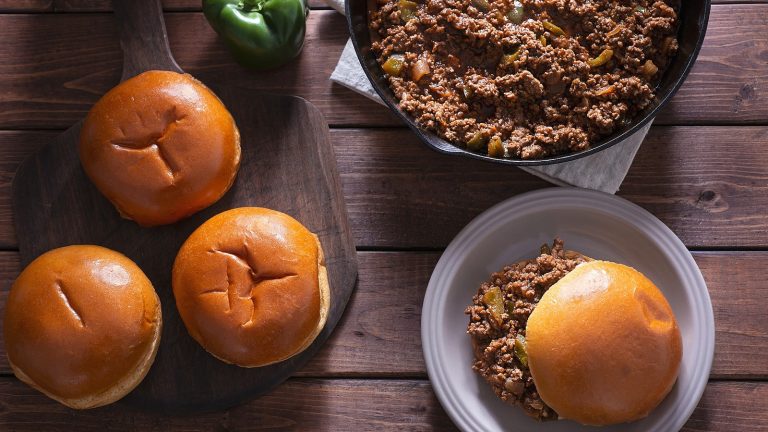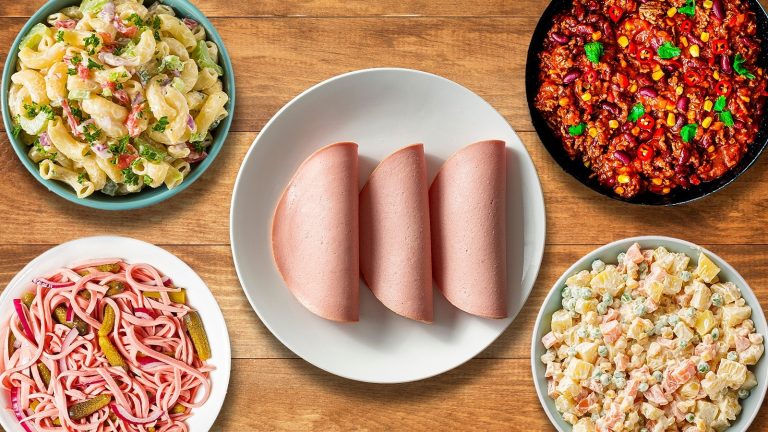Canada has made some incredible contributions to the world — from maple syrup and poutine, to Ryan Reynolds and Justin Trudeau. Perhaps the Great White North’s most underappreciated gift to humanity is its unique packaged treats. As an avid snack explorer and food blogger, I’ve learned to appreciate that Canadian convenience stores and grocery aisles hold treasures you simply can’t find at an American 7-Eleven.
While Americans might recognize a few of these items, most of these Canadian treats haven’t made their way south of the border. These treats represent a mix of British influence, French tradition, practical innovation, and subtle flavors that Canadians just seem to get. Some of these snacks have even developed cult followings, leading expat Canadians to arrange snack exchanges or stuff their suitcases full of goodies when returning from a visit home. Other snacks spark heated debates among Canadians themselves about which flavors reign supreme.
These 17 Canadian snacks — which range from candy bars with unique consistencies to unusual potato chips flavors — represent the delicious diversity of our northern neighbor’s treat aisle. Consider this your ultimate guide to the must-try goodies that make Canadian convenience stores a destination in their own right.
All Dressed chips
If you asked Canadians to name their national chip flavor, many would point to All Dressed without hesitation. The ultimate crowd-pleaser, these chips cannot be synthesized into a single flavor category as they nail nearly every craving in a single handful. No Canadian movie night or road trip is complete without them.
These flavor-packed chips somehow manage to be simultaneously tangy, sweet, salty, and savory. Specifically, the taste profile incorporates elements of barbecue, salt and vinegar, sour cream and onion, and ketchup, creating a chip that defies simple description.
Ruffles makes the most famous version, with their ripple-cut providing the right structure to stand up against the heavy seasoning. The deep crimson-colored powder coats each chip generously, often leaving your fingertips stained — the mark of a true All Dressed enthusiast. While some American regions have seen limited releases of All Dressed chips, the Canadian versions remain the true classic.
Ketchup chips
You thought Canadians would limit themselves to just one flavor of chips? Think again. Bright red, zesty, and utterly Canuck, ketchup chips inspire passionate devotion from Canadians while often puzzling American visitors. These chips balance sweet tomato notes with a vinegary bite and subtle spice. The scarlet-colored seasoning coats each chip, creating an intensity that starts subtle but builds with each crisp bite.
Lay’s version dominates the market, though fans often debate whether Old Dutch or President’s Choice offers the superior ketchup chip experience. The vibrant red color comes from a blend of paprika extracts and food coloring that inevitably leaves fingers stained, creating a badge of honor for dedicated ketchup chip fans.
Many Canadians living abroad cite these tangy treasures as their most-missed snack, often requesting care packages containing several bags — and one taste explains why. They’re surprisingly addictive with a flavor complexity that transcends traditional potato chip snacking.
Coffee Crisp
“How do you like your coffee? Crisp!” The iconic tagline from this vintage Coffee Crisp commercial has embedded itself in Canadian cultural consciousness, much like the candy bar itself. This Canadian treat features layers of light, airy vanilla wafer alternating with a coffee-flavored soft filling, all encased in a milk chocolate coating. The result is a candy bar that’s filling yet light.
Unlike many dense chocolate bars, Coffee Crisp’s layered structure makes for a bar that breaks cleanly with each bite, with the wafer layers giving way against the softer coffee cream. The coffee flavor is present but gentle, offering a sophisticated hint rather than an overwhelming punch. Despite its popularity, it’s also a divisive chocolate bar, with equal amounts of adults clamoring to steal it from their kids’ Halloween loot bags and instructing their offspring to throw it away upon sight.
Nestlé has manufactured Coffee Crisp in Canada since 1939, making it one of the country’s longest-running candy bars. Despite occasional limited distribution in American border states, it primarily remains a Canadian pleasure.
Smarties
Not to be confused with the pastel, chalky candy rolls that are popular in America, which are actually gluten-free, Canadian Smarties are colorful chocolate buttons with a crisp candy shell — think M&M’s, but with differences that Canadians will passionately defend as superior. Made by Nestlé in Canada, these button-shaped chocolates come in red, orange, yellow, green, blue, purple, pink, and brown.
The key differences from similar American candies lie in their slightly larger size, firmer shell and softer interior consistency, and more intense chocolate flavor. Canadians grow up debating the merits of different-colored Smarties, with some insisting that each color tastes slightly different.
Smarties’ packaging is also iconic. The hexagonal tubes with plastic tops that can be flipped to dispense one candy at a time have remained largely unchanged for generations, though the company has recently moved to manufacturing the package out of paper in an effort toward sustainability.
Caramilk
“How do they get the caramel inside the Caramilk bar?” This advertising mystery, introduced in 1968, continues to intrigue Canadians, while the rest of the world remains largely unaware of this golden-wrapped treasure. Made by Cadbury, Caramilk bars consist of six connected squares of milk chocolate, each containing a pocket of flowing caramel that oozes out with the first bite.
What distinguishes Caramilk from similar caramel-filled chocolates is the consistency and flavor of its caramel filling — a slightly thinner substance than most commercial caramels with a buttery smoothness and sweetness that complements the chocolate. The milk chocolate shell has the classic Cadbury creaminess that’s rich without being cloying.
While caramel-filled chocolates exist worldwide, Caramilk has achieved cult status in Canada through its decades of mysterious marketing and a highly protected recipe. For many Canadians, the clean break of a square followed by the slow melt of chocolate and caramel signifies a flavor experience that’s tied to national identity. It’s as instantly recognizable as a beaver wearing a checkered hat.
Dill Pickle Chips
Long before dill pickle became a trending flavor in the American snack market, Canadians were enjoying the zesty, briny goodness of dill pickle potato chips. These chips deliver a genuine pickle flavor that rivals the best store-bought pickles money can buy, balancing sour, salty, and herby notes with remarkable accuracy. The distinctive vinegar tang hits immediately, followed by the cooling dill and garlic notes that make the chips impossible to stop eating.
Winnipeg-based Old Dutch and Lay’s produce the most popular versions with subtle differences that spark heated debates among pickle chip enthusiasts. The best dill pickle chip has a few distinct characteristics: a powerful aroma that announces itself the moment the bag opens; moderate ridges to hold the seasoning; and enough flavor powder to make a baby sneeze. Canadian dill pickle chips manage to ride the line between tasting like chemicals and an actual dill pickle. Love it or hate it, the Canadian version has a pronounced herb presence and an unmatched vinegar sharpness.
Swedish Berries
Despite their name suggesting European origins, Swedish Berries are a Canadian candy. These candies should also not be confused with the enigmatic-tasting Swedish fish. Swedish Berries are firm, chewy, raspberry-shaped gummies that have a firm texture and a chewy interior. Its deep red color and subtle berry flavor has become a staple of Canadian movie theaters and corner stores across generations.
Manufactured by candy giant, Maynards, Swedish Berries feature a more pronounced difference between their outer and inner layers than most gummy candies. Swedish Berries can also hold their shape for a while, perhaps as a preventive measure given Canada’s muggy summers and the frozen temperatures of the remaining 10 months of the year. Unlike many gummy candies that become sticky or too soft in warm conditions, Swedish Berries maintain their bite across a range of temperatures. Its simple, recognizable shape and focused raspberry flavor has earned the gummies dedicated fans who consider it the perfect cinema companion or coveted Halloween candy.
Cheezies
Not to be confused with the British favorite — American Cheetos – Canadian Cheezies represent a different approach to cheese-flavored corn snacks. Made by W.T. Hawkins since 1949, these crunchy nuggets offer an intensely cheddar-y experience with a consistency that’s harder and crunchier than its American counterparts. Each irregular piece is visibly coated with a bright orange cheese powder that delivers a sharp cheese flavor.
The primary difference between Cheezies and similar snacks lies in their manufacturing process. Cheezies are made from aged cheddar and cornmeal that’s extruded and then baked (not fried), creating their signature hard crunch. The pieces vary dramatically in shape and size, with some resembling knobby fingers and others forming tight curls, adding to their homestyle appeal.
Packaged in clear bags with red and white stripes, with minimal design changes since the mid-20th century, Cheezies represent Canadians’ preference for tradition in their snack foods. The company still produces them in Belleville, Ontario, using much of the original equipment. The intense crunch and concentrated cheese flavor create a snack that’s simultaneously nostalgic and boldly flavorful and all around Canadian in its understated yet intensely good execution.
Mr. Big chocolate bar
Living up to its name, the Mr. Big bar is a substantial Canadian chocolate bar that comes in a rather large package. This imposing candy bar features layers of vanilla wafer, rice crisps, and chewy caramel all covered in a milk chocolate coating. At 60 grams and 8 inches long, it’s one of the physically largest mainstream chocolate bars on Canadian shelves.
Created by Cadbury Canada in the 1970s, Mr. Big’s appeal lies in its complexity. Each bite gives you the delicate crunch of wafer, the light crisp of rice, the chewy pull of caramel, and the smooth melt of chocolate. The wafer base lightens what could otherwise be an overly dense chocolate, while the caramel gives just enough chew to make the bar fulfilling without becoming difficult to eat. For Canadians, it represents the perfect solution when you want a substantial treat that gives more than just a quick sugar hit.
Maple leaf cream cookies
No Canadian snack assortment would be complete without something incorporating the country’s most famous flavor: maple. Maple leaf cream cookies feature two maple-leaf shaped cookies with a layer of sweet maple-flavored cream sandwiched between. Made by Dare Foods, these cookies have been a pantry staple across Canada for generations, instantly recognizable by their shape and warm, amber-colored packaging. This treat is so popular, you can buy a box in every Canadian duty-free store.
The cookie itself has a pleasant shortbread-like consistency that is crisp but not hard, with a subtle sweetness that works well with the more pronounced maple flavor of the filling. The cream center delivers genuine, quality maple flavor that avoids the artificial taste that plagues many maple-flavored products. Each cookie is embossed with veining that mimics a real maple leaf. These cookies pair excellently with tea or coffee, making them a comforting treat that pays homage to British biscuits while quietly celebrating Canadian identity.
Wunderbar
With a name meaning “wonderful” in German, this Canadian chocolate bar certainly lives up to the name with its unusual consistency. Created by Cadbury, the Wunderbar combines peanut butter and caramel with crispy rice pieces, all wrapped in milk chocolate. This combination makes for a candy that is simultaneously chewy, crunchy, and melty.
This chocolate’s name in Canada — and design — can be tied to a historically inaccurate but fun advertisement in which a group of vikings finds chocolate bars on the beach and exclaims, “Wunderbar!” upon the discovery. Despite the fact that vikings didn’t speak German, the advert stuck, and Canadians fell in love with the Wunderbar’s unusual texture and good sweet-to-salt ratio. The crispy rice elements are distributed throughout this center, creating surprising little pockets of crunch. The Cadbury milk chocolate coating adds a creamy sweetness that balances the salty peanut notes.
Wunderbar remains primarily a Canadian treat , though it can be found under other names around the world. The candy stands out for its vintage yellow packaging with bold purple lettering, and the aforementioned mystifying viking helmet.
Hickory Sticks
These thin, matchstick-cut potato chips have an intensely smoky flavor that falls somewhere between chewing on tobacco and a potato chip. Manufactured by Hostess (now merged with Frito-Lay and owned by PepsiCo), Hickory Sticks feature an instantly recognizable elongated shape and a deep golden color. Each piece is thoroughly saturated with a hickory smoke seasoning that is made up of red pepper, torula yeast, onion powder and paprika extract and that is sweet, savory, and slightly tangy.
The unusual shape, compact form, and smaller surface area of these snacks result in a denser, crunchier bite that intensifies the already-concentrated hickory flavor. Hickory Sticks have remained largely unchanged since their introduction decades ago, creating a nostalgic connection for Canadians who grew up with their aroma and flavor. The snack makes a perfect partner to Canadian beer and can be sprinkled as crunchy toppings on salads and casseroles in Canadian homes.
Wine Gums
Despite their name, these chewy candies contain no alcohol, just loads of flavor. Wine Gums are firm, chewy fruit-flavored pieces typically shaped like rounds or elongated lozenges. Traditional varieties are marked with names like “port,” “sherry,” and “champagne,” though their flavors are actually black currant, lime, orange, lemon, and raspberry.
Maynards makes the definitive Canadian version, a firmer and chewier candy than American gummy candies. The extended chewing time is not accidental, and though some don’t love it, it allows each candy’s complex fruit flavors to develop gradually. They also have a consistency that is even throughout without the sugar coating of some traditional gummies.
Wine Gums have become a road trip essential for many Canadian families, as their substantial chew makes them last longer than other candies, thus keeping young mouths quietly busy. Their slightly medicinal edge and firm consistency might surprise Americans accustomed to softer, sweeter gummies, but Canadians appreciate their more mature flavor profile and good resistance.
Cherry Blossom
This Canadian candy combines multiple textures in a dome shape that has marked generations of Canadian Christmases. Each Cherry Blossom features a whole maraschino cherry suspended in a liquid cherry syrup surrounded by a thin layer of cherry-flavored fondant, and all of this is encased in a shell of dark chocolate and crushed peanuts.
Made by Lowney, then Hershey Canada until its discontinuation in January 2025, Cherry Blossoms have been largely unchanged since their introduction in the 1940s. Their appeal lies in the surprise of biting through the crunchy chocolate-peanut exterior to reach the liquid center, all the while avoiding cherry syrup accidents. The contrast between the brittle chocolate shell, chewy fondant layer, and liquid center is the essence of this old-fashioned sweet.
If you manage to get your hands on one these candies, know that they must be approached with deliberate attention. The intrepid taster who manages to avoid spills will be rewarded with a mix of chocolate richness, peanut crunch, and bright cherry flavor that feels like the essence of fancy in 1949.
Pizza Pops
These handheld stuffed pastries represent Canadian convenience food at its best, and there isn’t a student in Canada who hasn’t subsisted on these for at least one exam period. Similar to calzones or Hot Pockets, Pizza Pops have a dough exterior crimped around fillings like pepperoni, cheese, and sauce for a portable meal that’s become a staple in Canadian freezers since the 1970s.
Manufactured by Pillsbury and now General Mills, Pizza Pops have a half-moon shape with a sealed edge and slightly flaky pastry exterior. The classic pepperoni variety has a somewhat spicy flavor, with a seasoning mix that Canadians instantly recognize. Additional varieties like bacon and three-cheese have expanded the Pizza Pop line.
Neither claiming to be genuine Italian cuisine nor hiding their processed nature, Pizza Pops simply deliver good, cheap, handheld comfort that is perfect for Canadian winter days. College students, busy parents, and late-night snackers across Canada have made these microwaveable pockets a multi-million-dollar brand.
Aero chocolate
Nestlé’s Aero is a chocolate bar that stands out for what many would consider the downfall of a good candy bar — being full of air. This simple milk chocolate has been infused with tiny air bubbles, creating a honeycomb-like interior that melts faster than solid chocolate.
The standard Aero bar is divided into segments, each featuring the Aero name embossed on top. Breaking a piece reveals the chocolate’s bubbled interior structure, with a clean snap immediately followed by a rapid melt as the increased surface area meets body temperature. While the original milk chocolate remains most popular, there are plenty of other flavors around.
Rather than relying on mix-ins or multiple components, Aero delivers its experience through a fundamental change to chocolate’s structure. The resulting transformation turns simple chocolate into something special through scientific precision. While first developed in the U.K. and available in some international markets, the Canadian Aero remains strong.
May West cakes
These iconic Quebec snack cakes are known across Eastern Canada where they were a staple of many a kid’s lunchbox for generations. Each May West consists of two small, round yellow cakes sandwiching a white vanilla cream filling, all covered in a thin chocolate coating. The resulting cake is roughly the size of a hockey puck — an appropriate comparison for this thoroughly Canadian treat.
Manufactured by Vachon, May Wests give a good balance of cake, cream, and chocolate in each bite. The yellow cake has a subtle vanilla flavor and light, slightly dense consistency that holds together without crumbling. The cream filling brings sweetness without being too much, while the thin chocolate coating adds a rich note that wraps everything together.
May Wests are named after American actress Mae West, which made them divisive in their patriotic French province of origin. While similar in concept to products like Ding Dongs or Hostess CupCakes, May Wests are particularly beloved in eastern Canada’s provinces.





